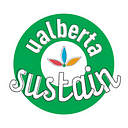Hunting can help conserve waterfowl
Investments in wildlife and habitat protection are tied to a sport in decline
By Jenna Bell
Hunting numbers must increase or conservation of waterfowl may suffer, according to a University of Alberta professor.
Howie Harshaw is a professor in the Faculty of Kinesiology, Sport, and Recreation studying the contributions of birdwatchers and waterfowl hunters to wetland and bird conservation. His project focuses on how people’s engagement in outdoor recreation affects their conservation behaviour and environmental attitudes.
Conservation and hunting are not two words that would seem to go together, but by purchasing licenses, stamps and permits, as well as monitoring and managing the landscape, hunters play a critical role in waterfowl conservation.
“There is a direct benefit from purchasing Canadian Wildlife Habitat Conservation Stamps,” said Harshaw. More commonly known as duck stamps, these are an additional fee that hunters pay to be allowed to go hunting.
“Fees from that stamp go towards research, but also to the conservation of wetlands and other habitats,” said Harshaw.
In this way, hunting tourism brings in a significant amount of money for conservation. An annual revenue of $24 million (USD) is collected from these waterfowl licenses across North America. It then directly funds conservation plans by organizations like Ducks Unlimited, the North American Waterfowl Management Plan (NAWMP), and regional joint ventures.
Revenue from hunting also helps to conserve wetlands, vital ecosystems which are quickly disappearing. Ducks Unlimited Canada has helped conserve 6.4 million acres of wetlands and waterfowl habitat since the organization’s formation.
Eyes on the prize
Money is not the only way that hunters contribute to conservation. Being out on the landscape tracking and observing wildlife is another helpful conservation activity.
“Having people out there on the landscape noticing changes and talking about those with land use managers, and wildlife managers can identify issues before they arise,” said Harshaw.
And hunting alone can be an important part of conservation management. Many wildlife managers point out that waterfowl populations are growing at a rapid rate. Duck population numbers are up 38 per cent from the long-term average (1955–2016), according to Ducks Unlimited. Managing the number of waterfowl on the land helps to maintain balance throughout the ecosystem.
Killing is killing the sport
So it is alarming to many conservationists that, despite their importance, hunting in North America continues to decline in popularity.
“Despite tremendous efforts over the past 20–25 years to maintain and even trying to increase the number of waterfowl hunters, it really hasn’t happened,” said Harshaw. The number of waterfowl hunters has been falling since the 1970s.
A major barrier to increasing hunting participation relates to the negative connotations associated with killing animals.
Harshaw conducted a survey of Albertans asking about their opinion on hunting, and roughly one-third of the participants stated that they do not hunt for moral or ethical issues. “We drilled down to what those [factors] were exactly and a lot of it was this feeling that they didn’t want to kill things and that killing is bad,” said Harshaw.
Another issue is the overall decline in outdoor recreation. Fewer people are going outdoors and engaging with nature — rather, more people are living in urban centres and spending more time on electronic devices inside.
And with increased urbanization comes more difficulty in finding land to hunt on. Hunters are needing to drive further than ever before, and landowners seem to be more wary of allowing hunters on their property.
“Can you imagine as a landowner if you had an unknown person come up and say, ‘I’d like to go hunting on your land’. Are they responsible hunters? Are they responsible people?” said Harshaw. These reservations have merit as guns can be dangerous and can cause injuries to unintended targets.
Creating a future for hunters
If the hunting community wants to turn this decline around, Harshaw suggests that hunters must create more understanding and awareness about the positive impact of their activity.
“If you’re a hunter, I think you have a responsibility to talk to non-hunters about what you do— go talk to your neighbours, talk to your relatives, talk to your friends. Try to demystify it. Why do you hunt? Share what you’ve harvested,” said Harshaw.
For many individuals, hunting is much more than just a hobby. Hunting is a part of their identity. Engaging in conversations about our hobbies and life passions is an effective way to break social stigmas and gain understanding.
“Outdoor recreation brings people together — we engage with people using our stories and our experiences,” said Harshaw.
